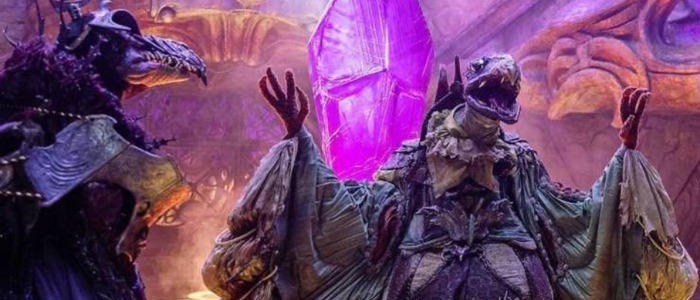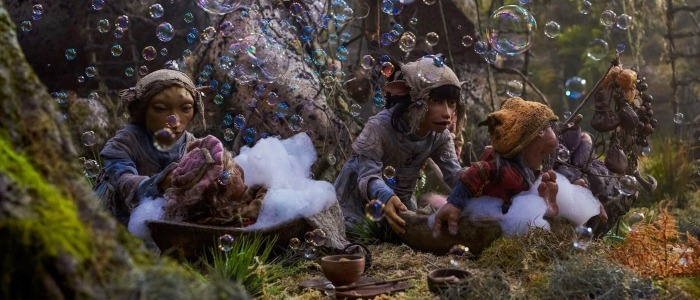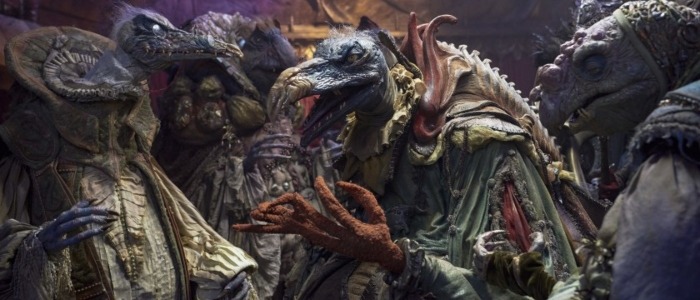How 'The Dark Crystal: Age Of Resistance' Honors Jim Henson's Original Vision
1982's The Dark Crystal makes its intentions and credentials clear from the very start. Narration sets up a dense history of a fractured world as we're treated to grand visuals of an ominous landscape and a group of villainous creatures out of step with the planet around them. The wizards at Jim Henson's studio create the unfolding world through painstakingly detailed artistry, and every living thing on the screen is brought to wondrous life with puppetry. The film wasn't the hit it deserved to be, but the thirty-seven years since have seen it become a beloved cult favorite.A follow-up of some kind has been in various stages of development for years now, but it took Netflix being an interested party to see it become a reality. Both the streaming giant and The Jim Henson Company toyed with its return being a CG animated experience (both in part and in full) before making the brilliant but incredibly risky decision to honor the original film and complete their own project – a ten-episode prequel series called The Dark Crystal: Age of Resistance – using puppets and practical effects (with minimal CG assists).The risk paid off, and the series is a glorious success capturing both the tone and content of Henson's original film while telling its own story with characters new and old. Its desire and effort to revisit the overall feeling of The Dark Crystal was a big gamble across the board, but the risk is most evident in three areas – the series employs a dense narrative that both challenges and respects the audience, it doubles down on its embrace of darkness and death, and it commits to prioritizing puppetry and practical effects.
A Dense Story, a World Filled with Character(s), and a Trust in Viewers Young and Old
The Dark Crystal is about a young Gelfling named Jen who's presumed to be the last of his kind after a genocide perpetrated by the cruel, syphilitic ruling class known as the Skeksis. These wingless, vulture-like beasts run Thra through force, fear, and a rejuvenating energy they sap from a large crystal representing the heart of the planet, and each of the ten remaining Skeksis is mirrored by a gentle, sloth-like Mystic living in hiding somewhere on Thra. The two species appeared simultaneously one thousand years prior, but now the mystics have sent Jen out on a mission – make the crystal whole again by returning a missing shard, or the Skeksis will rule for eternity.That's already a lot to take in, but much more follows across the film's 93-minute running time including the discovery of another Gelfling, the introduction of additional races and characters, and the eventual reveal that it was an alien species, the urSkeks, whose own hubris over the crystal saw them ripped into two halves – the Skeksis and the Mystics – and only through restoring the crystal can they be reunited into single beings. There are no humans here, but the film's theme about humanity's dual nature, the good and the bad in all of us, is given literal life here to great effect with the reunified urSkeks acknowledging that both halves are necessary to create the whole. It's a heady concept, but the film trusts viewers will not only understand it but also appreciate the conclusion.It's a film packed with detail, but Henson and co-director Frank Oz remained adamant about telling the story with a luxurious pacing foreign to today's "kiddie" entertainment. (I revisited the film a few years back at a repertory theater, and while the nostalgic adults ate it up more than a few of the kids were clearly not as enthralled.) There are intense sequences, and it builds to a frenzied finale, but much of the film is given over to characters allowing them time to breathe, communicate, and – in the Skeksis' case – enjoy some utterly disgusting meal breaks. There are no studio mandated "action" beats scheduled in every ten minutes, and instead the film moves only as fast as the characters demand, peeling back story layers and drawing closer to a final confrontation between the Skeksis and the Gelflings.Age of Resistance is a prequel set years before the events of the film – how many years is unclear as both it and the original film seem to both take place roughly one thousand years after the Skeksis' arrival – but it immediately finds a familiar rhythm with its narration and visuals. The Skeksis draw power from the crystal, but that power is waning, and it's only an accident that reveals a dark new truth. The crystal can suck the life essence from living subjects creating a super-powered Ensure-like substance guaranteed to give whoever drinks it an extra pep in their step. Any living creature can be sapped of their essence, but Gelflings deliver the tastiest fluid, and when one named Rian discovers the truth he sets out to reveal the truth. That's right, the series even honors the film by delivering another bland male hero overshadowed by both the villains and female characters sharing the screen.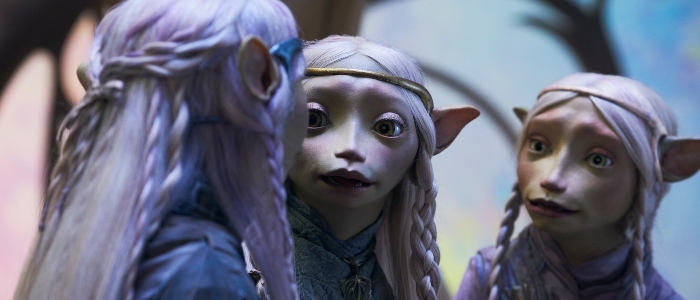 Its story is once again thick with detail and characters, and as the opening narration tells us we don't just have Gelflings this time around – we have seven distinctly different clans of Gelflings with names like Stonewood, Vapra, and Grottan. Members of those three occupy the bulk of the story, but by the time the season ends we meet characters from others including the Sifa, the Dousan, the Spriton, and the Drenchen. It's every bit an attempt at the dense world-building of something like The Lord of the Rings, albeit world-building that champions matriarchal societies, and it's just not something most child-friendly fare aims for these days. We're given a lot of names to remember and distinguish between, and the series doesn't take the easy way out by limiting our attention to one character per clan either. Don't be surprised if it takes an episode or three to lock down and distinguish the three Vapra princesses from each other (or maybe that's just me). Multiple story threads introduce characters with their own agendas, and many of them cross paths, share information, and continue to move the story forward.
Its story is once again thick with detail and characters, and as the opening narration tells us we don't just have Gelflings this time around – we have seven distinctly different clans of Gelflings with names like Stonewood, Vapra, and Grottan. Members of those three occupy the bulk of the story, but by the time the season ends we meet characters from others including the Sifa, the Dousan, the Spriton, and the Drenchen. It's every bit an attempt at the dense world-building of something like The Lord of the Rings, albeit world-building that champions matriarchal societies, and it's just not something most child-friendly fare aims for these days. We're given a lot of names to remember and distinguish between, and the series doesn't take the easy way out by limiting our attention to one character per clan either. Don't be surprised if it takes an episode or three to lock down and distinguish the three Vapra princesses from each other (or maybe that's just me). Multiple story threads introduce characters with their own agendas, and many of them cross paths, share information, and continue to move the story forward.
The series also continues the film's themes of duality, of the good and evil inside us all, but this time around the message offers a more nuanced and realistic take on the idea. Rather than all Skeksis being bad or all Gelflings being innocent and good, characters are given more depth. The same basic idea remains, but here we're treated to Gelflings who betray their own kind for power and a Skeksis named skekGra the Heretic who recounts his own horrible deeds committed before he found reason and compassion.
Like the film, this is a story in no hurry to reach its end, and the benefit of ten episodes is that it has far more breathing room. It's an epic that rewards viewers young and old who follow along and pay attention to the details, and those who don't will get lost in the carnivorous weeds wondering who these characters are and why they're bathing little bare-assed potato people.
This is a mix of new and old characters with their own story to tell, but the series never forgets that it's also a prequel to the film – a movie that reveals at the very start that the Gelflings have essentially been wiped out by the Skeksis. We know these characters will most likely die before the story is done, whether it be this season or the next, and that their rebellion will ultimately fail, but it succeeds brilliantly in making us care and cheer for them anyway. Season one ends with the Gelflings and their allies triumphant having sent the remaining Skeksis scrambling back to their castle, and while we know defeat is coming. We're given nods forward from the reveal of the shard which will be used in the film to save Thra to the creation of the Skeksis' morbid creation of the nightmarish and giant sandflea-like Garthim which still haunt the dreams of people who saw the film as children. They're intriguingly recognizable teases for viewers of what's to come, but they can't distract from the haunting knowledge that death is also coming for all of our heroes.
Darkness and the Necessity of Death
The prequel, like the film, once again has a heavy focus on death – characters die, and in both iterations death is deemed an important part of life and not something to fear. It's a lesson everyone should learn, and while some of us see the message co-opted by religion or terror the final truth is one to be embraced – we're all going to die, so what matters is how you live.The Dark Crystal pairs the idea with all of its characters but focuses it on the dual nature of the Skeksis and the Mystics. The pairs are linked, and when one dies or is injured its counterpart follows suit. The film goes a bit easier, though, with its hero characters, the Gelflings. Jen and his new friend Kira bring the fight to the Skeksis, and Kira dies in the skirmish at the end of a sword blade. It's a powerful moment as her sacrifice allows Jen the opportunity to restore the crystal and end the tyranny, but once the Skeksis and Mystics merge back into the ethereal urSkeks the beings reward the Gelfling's courage by resurrecting her. It's the only time the film plays anything safe, but in its defense there are only two members of the damn species left.
Parents and critics at the time still took issue with how dark the film is and worried for their children, but those same people would probably have a heart attack watching the series. Age of Resistance takes a similar approach and treats death with both reverence and an acknowledgment that it's both inevitable and necessary. The difference here, and something that might be an understandable deal-breaker for some, is that the deaths are frequent, often brutal, and with only one and a half exceptions, permanent.
Characters are drained until they pop out of existence, others are stabbed and slaughtered by giant spiders, a slave has his head bashed in after watching his only friend tossed into a fiery pit, Rian's father sacrifices himself for his son by knocking a Skeksis into what's basically quicksand with teeth – the series is filled with intense sequences of villains terrorizing weaker creatures. Some are belittled, many are enslaved, and still others are eaten in sequences that should rank highly on lists of the most disgusting mealtimes ever filmed. One of the princesses is surrounded by the much larger Skeksis, taunted, and then savaged as they tear at her clothes and hair. No joke, this is a terrifying and unsettling series at times that you should absolutely watch with your family.
All of that darkness, though, exists for two purposes. It adds drama and loss, both of which fuel narrative conflict, but just as important in both the film and the series – and in hero tales in general – it makes clear that our choices have consequences. Intentions are important, but actions carry far more weight. All three of the Vapra sisters want the best for their people, for example, but while two fight (and one dies) Princess Seladon chooses to join with the Skeksis thinking it offers the Gelflings their best hope for a future. Her choice, her inaction, leads to slaughter. She becomes an easy character to despise, but the series makes her thought process clear allowing viewers to understand choices even as we fiercely disagree with them. Of course, even more perish following the others against the Skeksis, but that's life and death on the dangerous and beautiful world of Thra.
The Practical Is Tangible
Characters, themes, and a penchant for death are one thing (or three things if you're nasty), but the glue that holds them all together is of the industrial strength modelling variety used to build a physical world you can almost imagine touching through your screen. The Dark Crystal was the largest live-action production of its time not to feature people, and while puppets were Henson's bread and butter it was still a massive undertaking. Returning to that style of filmmaking was no easy decision, and as mentioned, both Netflix and the Henson company debated a shift to CG instead. They even produced a demo reel showing how it would look pitting physical Skeksis against animated Gelflings.
They chose the more challenging path, though, and went with puppets, and it's here where they honor Henson's life and work the most. Puppetry is an art form all its own requiring talents in performance and perception, and the series embraced this method of storytelling at every turn. Everything from the buildings and rocks to the wildlife and swaying flora is crafted from real materials, and the filmmakers this time around even went back to the original film to recreate individual flowers glimpsed only briefly across their ten episodes. Henson was always open to using everything at his disposal including optical effects in The Dark Crystal, and in turn the new series employs CG assists to add to the look of the world. The vast majority of what we're seeing, though, is a world crafted and captured through physical means.
Netflix and Henson brought back artist Brian Froud to once again design the creatures, landscapes, and everyday objects of Thra, and it's a family affair as his equally talented wife Wendy and son Toby also contributed. It's a step that isn't necessary and one that doesn't always happen when films or shows are revisited years later, but it shows a level of commitment to recreating this world. While the tone carries over in the story and characters, the physical feel of The Dark Crystal is equally consistent. That's not always the case – Ridley Scott's Prometheus (2012) is a prequel to his Alien (1979) but features vastly improved on-screen tech and design; it makes no logical sense and instead is due to the prequel being made thirty-three years after the first – but here it's easy to imagine these new characters stepping out of the show's frame and walking into the film.
The puppets are crafted and utilized in similar fashion, and while more electronics can fit these days affording more specific controls and movements it's still a human being at the end of the day wearing a heavy Skeksis suit or walking through the false floors of a raised set with their hand inside a Gelfling's body and head. If there's a criticism to the upgrade it's with the CG touch-ups meant to make character faces more animated and expressive. It's most seamless, but sometimes an eye blink or a slithering tongue screams CG against the felt, rubber, and cloth of the physical puppets. Digital effects are also used to add spectacle to the landscapes, but as with the optical work from the film they add to the other-worldly atmosphere.
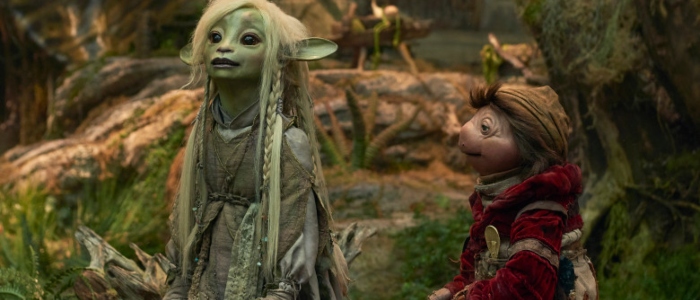
While much effort is expended to make the series look and feel like the movie, one aspect gets an upgrade thanks to director Louis Leterrier – yes, that Louis Leterrier (The Transporter, 2002; The Incredible Hulk, 2008). While Henson's film, and puppet productions in general, typically keep camera movements to a minimum and limited to tracking shots, profiles, and such, Age of Resistance immerses viewers directly into the action. Leterrier, often acting as his own cameraman, moves in and out of his characters' interactions giving the series a more lively and organic feel. It's a noticeable change from the film, but it's a welcome one that works to enhance the illusion of life even more. We know these are puppets, of course, but weaving our way through their lives makes viewers feel a part of Thra itself.
It's no hyperbole to call Age of Resistance the best thing Netflix has yet produced. From the initial risk of the investment through the creative choices made along the way to the brilliant, magical, and respectful end result, this is epic filmmaking that will be watched and beloved for generations. Your move, Martin Scorsese's puppet-free The Irishman...

